Overview
Building your company brand can feel overwhelming, especially when you consider the many facets involved. Many founders struggle to define their brand identity or connect with their target audience, leading to frustration and uncertainty. This is a common challenge, but it doesn’t have to be insurmountable.
To navigate this journey effectively, consider following five key steps:
- Define your brand identity, which serves as the foundation of your business.
- Identify your target audience and market; understanding who you’re speaking to is crucial.
- Develop a unique brand positioning strategy that sets you apart from competitors.
- Create compelling brand elements that resonate with your audience.
- Ensure consistent brand messaging across all platforms, as this fosters recognition and loyalty.
Each of these steps is interconnected and essential for establishing a strong brand presence. By aligning your core values with consumer needs and maintaining uniformity in your branding efforts, you can build a brand that not only stands out but also nurtures trust and connection with your audience. Remember, you’re not alone in this process; many have walked this path and found success through thoughtful branding. Embrace the journey, and know that support is always available as you cultivate your brand.
Introduction
In today's fast-paced marketplace, building a successful company brand is more crucial than ever. Consumer preferences shift rapidly, and competition is fierce, leaving many founders feeling overwhelmed. It can be disheartening to see how easily a brand can fade into the background when it doesn't resonate with its audience.
However, companies that take the time to effectively define their brand identity and connect with their target audience not only stand to gain a significant advantage but also foster loyalty and trust. Yet, with so many elements to consider—from core values to visual identity—navigating the complexities of brand building can feel daunting.
How can you ensure your brand truly resonates with your audience? This guide offers five essential steps to create a compelling brand that not only captures attention but also drives long-term success. Together, we can explore these steps and empower your brand to thrive in a challenging landscape.
Define Your Brand Identity
-
Identify Your Core Values: It's essential to start by outlining the fundamental beliefs that drive your business. These core values should genuinely reflect what your company stands for, guiding your decision-making processes. In 2025, connecting your identity with values that resonate with consumers is increasingly important, as 68% of adults prefer companies that align with their personal values. RNO1 emphasizes this alignment through innovative performance marketing strategies designed to resonate with target audiences, helping you build a deeper connection.
-
Articulate Your Mission Statement: Craft a concise mission statement that encapsulates your organization's purpose. This statement should clearly communicate your goals and how you intend to serve your customers, reinforcing the emotional connection that fosters loyalty. RNO1's approach to branding focuses on creating meaningful connections through design-driven solutions, ensuring that your mission resonates with those you aim to serve.
-
Determine Your Identity Personality: Define the traits that characterize your identity. Whether you envision your brand as friendly, professional, innovative, or adventurous, your identity personality should be consistently conveyed across all communications and interactions. This consistency enhances product recognition, making it 3.5 times more noticeable to consumers. RNO1's design-first approach ensures effective communication of your company personality at every touchpoint, nurturing a lasting impression.
-
Create a Visual Identity: Design a logo, color palette, and typography that visually represent your company brand. These elements should be distinctive and easily identifiable, forming the foundation of your visual identity. A signature color can enhance company recognition by up to 80%, making it a crucial element of your marketing strategy. Furthermore, 75% of individuals identify a company primarily by its logo, highlighting the essential role of logos in company recognition. RNO1's commitment to design ensures your visual identity stands out in a competitive landscape, helping you connect more meaningfully with your audience.
-
Document Your Identity Guidelines: Compile all the above elements into a comprehensive identity guideline document. This will serve as a reference for maintaining consistency in all branding efforts moving forward. With 15% of companies lacking guidelines, having a clear framework is essential for effective management of identity. The emphasis on design-driven solutions assists clients in developing strong brand guidelines that improve marketability and promote growth, guiding you on your journey toward success.
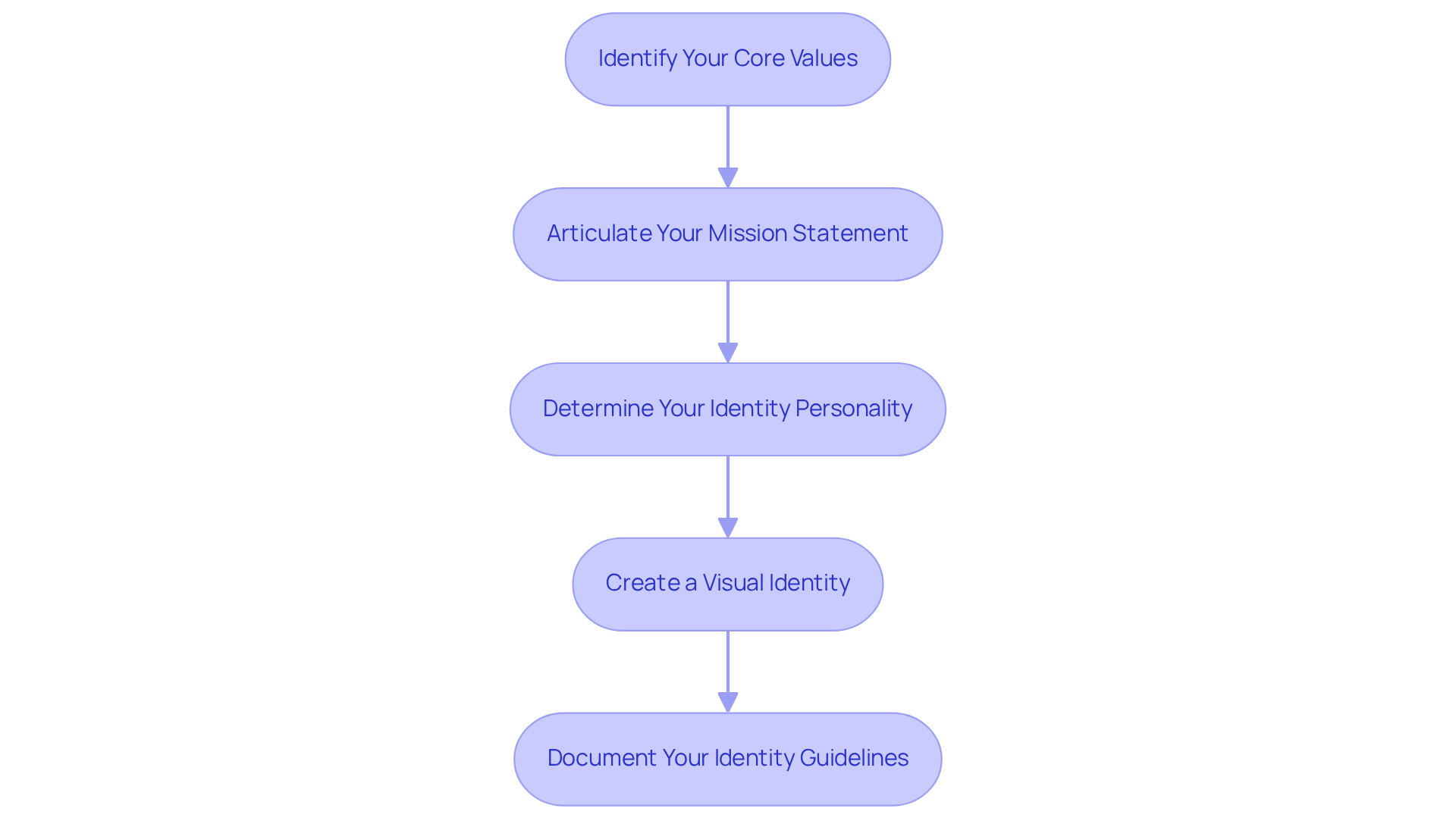
Identify Your Target Audience and Market
-
Conduct Market Research: Many startup founders face the daunting task of understanding their potential customers. Through surveys, interviews, and focus groups, you can gather invaluable data about your audience. By analyzing demographic information such as age, gender, income, and interests, you can build a comprehensive profile that truly reflects their needs. In 2025, an impressive 85% of market researchers turned to online surveys, showcasing their effectiveness in data collection. It's significant to note that 62% of researchers reported their companies rely heavily on these insights, underscoring the necessity of thorough market research in developing your brand. The strategic rebranding of Founder's Haven serves as a poignant reminder of how understanding the modern founder's needs can optimize branding efforts for success in the digital landscape.
-
Create Buyer Personas: Crafting detailed profiles of your ideal customers is essential in today's competitive environment. By including information about their goals, challenges, and purchasing behaviors, you can gain deeper insights into their motivations. Startups that tailor their approaches to specific buyer personas frequently see a remarkable 30% increase in engagement. The experiences of this organization with brands like Cirkul highlight how targeted personas can lead to effective marketing strategies that resonate with your audience.
-
Analyze Competitors: Understanding your competitors is crucial for identifying their target audiences and marketing strategies. This knowledge can reveal market gaps and opportunities for differentiation. It's sobering to recognize that the leading cause of startup failure is a lack of market need, accounting for 42% of failures. This reality emphasizes the importance of robust competitive analysis. The performance marketing expertise of this entity illustrates the significance of comprehending the competitive landscape to avoid common pitfalls.
-
Utilize Analytics Tools: In our digital age, leveraging tools like Google Analytics and social media insights can transform your understanding of user behavior and preferences. This data is invaluable in refining your audience insights. In 2024, 61% of survey responses were submitted via mobile devices, highlighting the importance of mobile optimization in your analytics approach. RNO1's iterative approach to analytics ensures that your branding plans remain relevant and effective, adapting to the ever-changing landscape.
-
Test and Iterate: The journey of understanding your target audience is ongoing. Continuously testing your assumptions through A/B testing and feedback loops allows you to modify your approaches based on what resonates most with your audience. Startups that adapt their strategies based on user feedback often witness enhanced conversion rates, with targeted emails generating 30% more opens and 50% more clickthroughs than their non-targeted counterparts. As Leigh Ann Tucker observed, the design-first approach and remarkable outcomes of the company exemplify the importance of iterative processes in achieving a successful identity. Furthermore, RNO1's partnerships with companies like Highline and Cirkul showcase marketing strategies that can inspire and motivate tech startups on their journey.
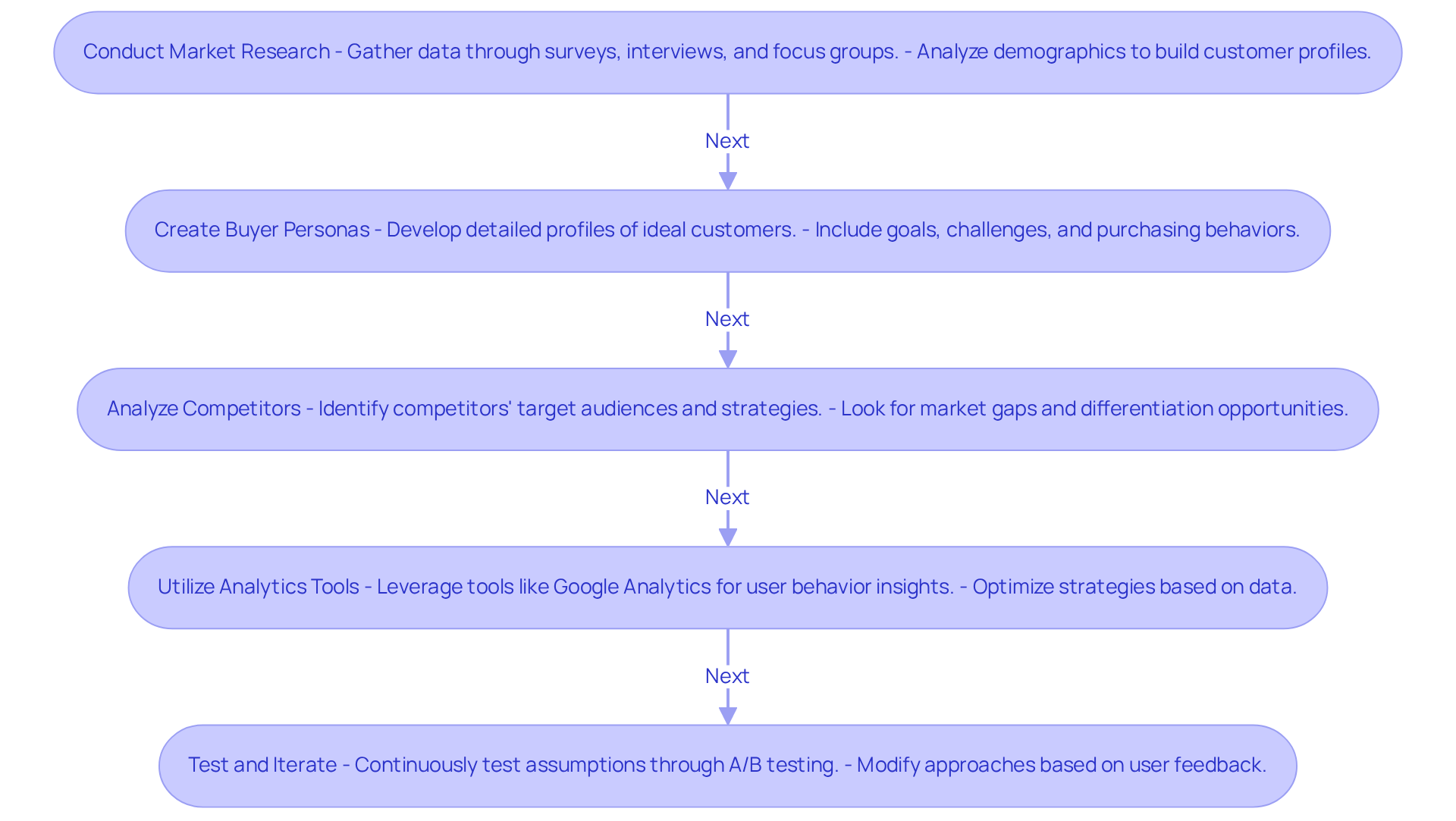
Develop a Unique Brand Positioning Strategy
-
Identify Your Unique Selling Proposition (USP): In today's competitive landscape, it can be challenging to stand out. What truly sets your identity apart from others? Perhaps it's an innovative feature, exceptional service, or a specific value that resonates deeply with your audience. Research shows that 77% of consumers make purchasing decisions based on product names, highlighting the importance of a strong USP in your journey.
-
Craft a Positioning Statement: It's vital to develop a clear and concise statement that captures your company brand, your target audience, and the market category you occupy. Think of this statement as your guiding star, steering all marketing efforts toward alignment and focus.
-
Analyze Competitor Positioning: Take a moment to evaluate how your competitors are positioning themselves. What are their strengths and weaknesses? By understanding these aspects, you can uncover opportunities for your company brand to shine. Effective product positioning can lead to revenue growth of 10% to 20%, making this analysis a crucial step in your strategy.
-
Align Your Messaging: Consistency is key. Ensure that all your marketing materials reflect your positioning strategy. When your messaging is uniform, it strengthens your identity and enhances recognition. Remember, 90% of consumers expect a cohesive experience across all channels.
-
Monitor and Adapt: The market is ever-changing, and so are consumer preferences. Regularly assess your company brand's positioning within this landscape and be ready to adjust your approach as needed. Brands that maintain a consistent identity can experience revenue growth of 10% to 20%. This underscores the importance of continuous evaluation and adaptation in your business journey.
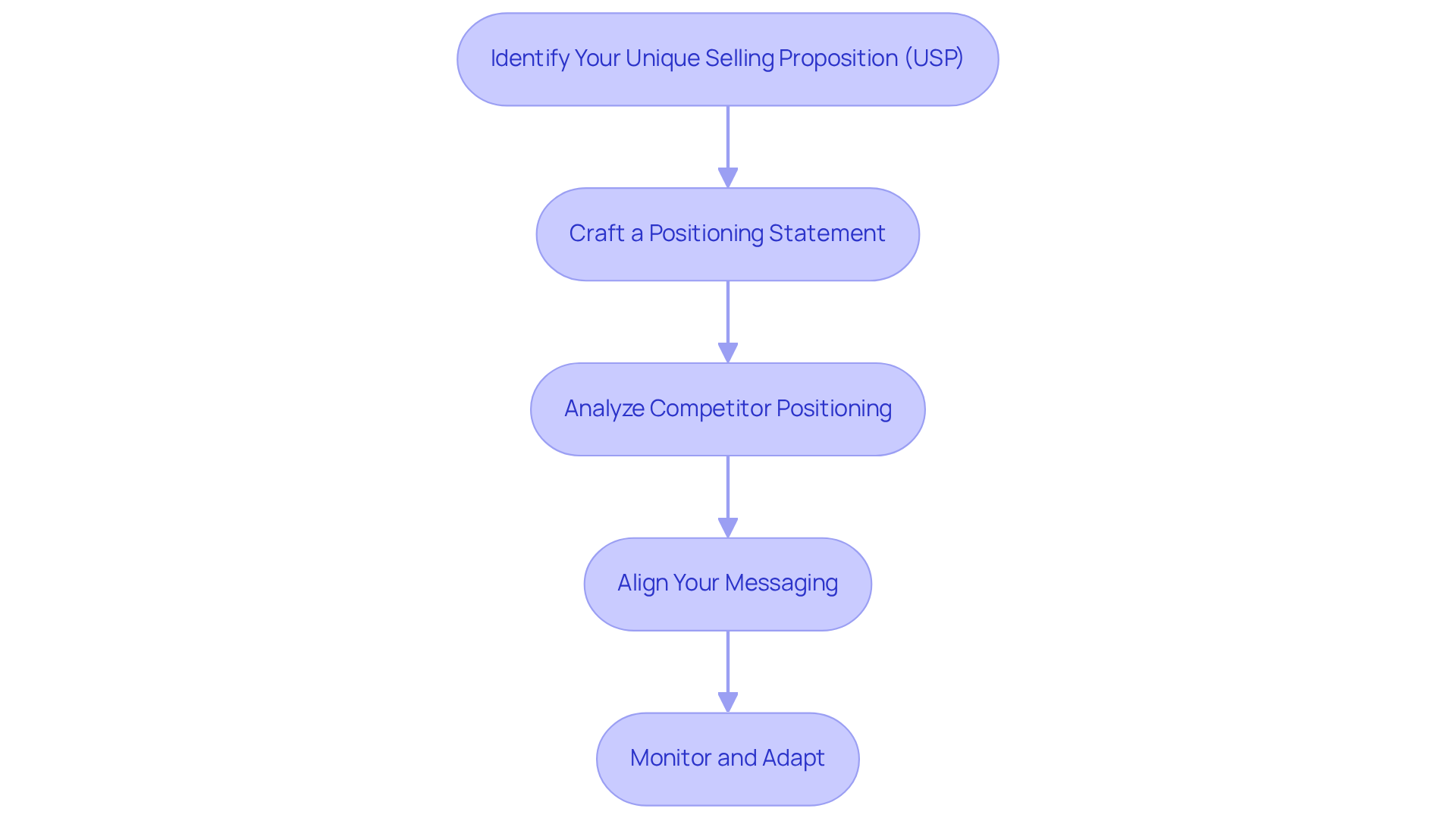
Create Compelling Brand Elements
-
Design a Memorable Logo: Creating a logo that truly reflects your identity can feel overwhelming. It's essential for your logo to be simple, versatile, and aligned with your mission and values. When done thoughtfully, it resonates with your target audience, enhancing recognition. A well-crafted logo not only improves visibility but also enhances the company brand of RNO1's RODD strategies by establishing a strong visual identity that you can be proud of.
-
Develop a Color Palette: Choosing the right colors can evoke emotions and represent your identity in a way that connects deeply with your audience. Research indicates that color influences 60-80% of purchasing decisions, making consistent color usage vital for recognition. By strategically leveraging color, RNO1 helps you maximize emotional engagement, ensuring that your company brand aligns beautifully with RODD strategies.
-
Select Typography: Selecting fonts that express your identity while ensuring legibility is crucial. Typography is more than just text; it plays a vital role in your visual identity, reinforcing consistency and enhancing user experience across platforms. This thoughtful alignment with RNO's design methodology supports RODD initiatives, ensuring that your typography not only communicates but also enhances your company brand.
-
Create Visual Assets: Designing additional visual elements like icons, graphics, and imagery can significantly enhance your identity. When these assets are used consistently across all channels, they promote recognition and foster familiarity, directly supporting the company brand approaches of your organization. Each visual element tells a part of your story.
-
Establish Brand Identity: Defining the tone and style of your organization's communication is a journey worth taking. Your voice should remain consistent across all touchpoints, from social media to customer service, to build trust and engagement with your audience. A persuasive company brand voice is essential to RNO1's design-focused strategy, amplifying the impact of RODD and nurturing the relationships built with your community.
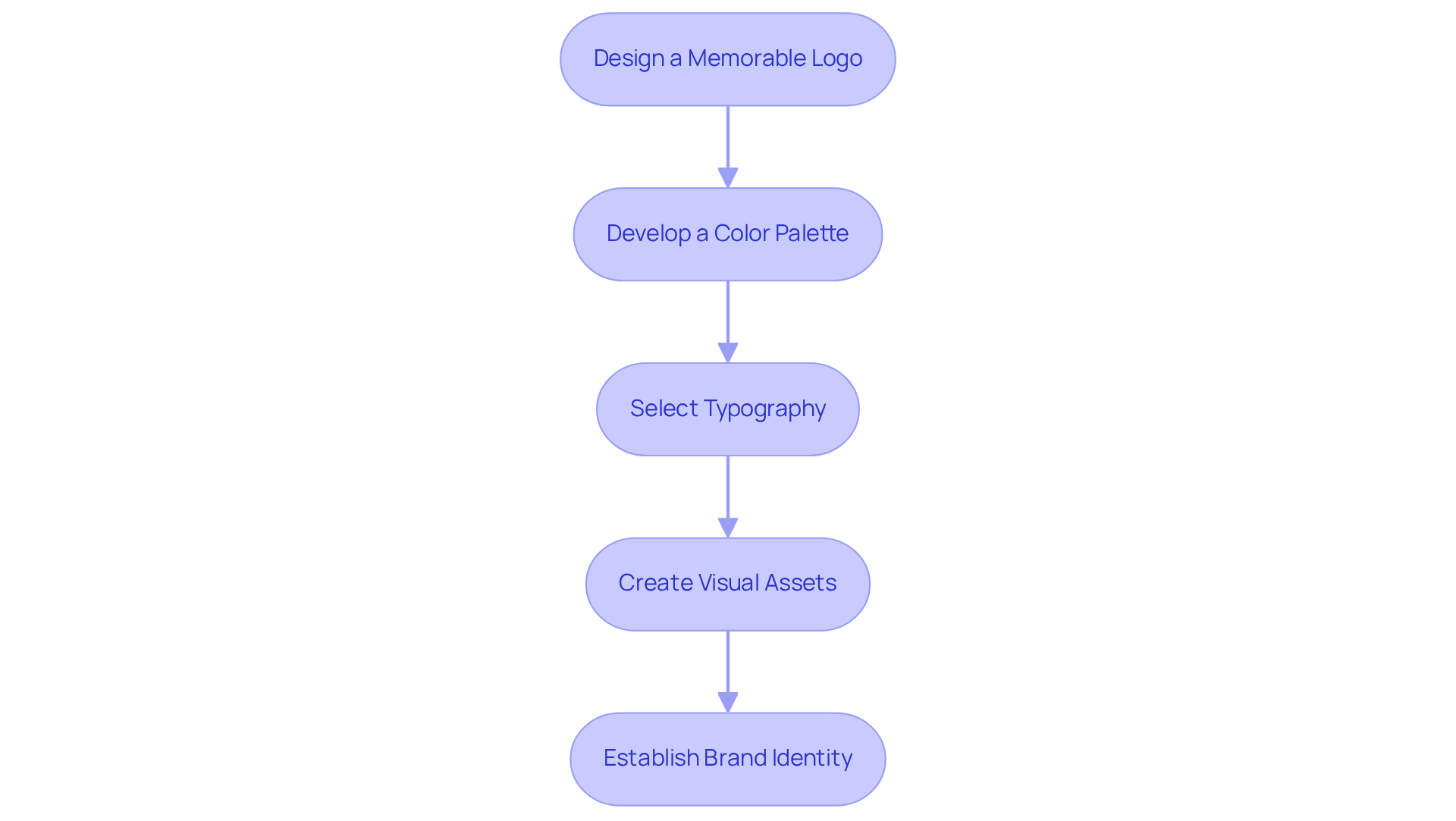
Ensure Consistent Brand Messaging
-
Create a Messaging Framework: Many tech startup founders struggle to communicate their vision effectively. Establishing a comprehensive messaging framework can help articulate your key messages, taglines, and value propositions. This framework serves as a foundational guide for all communications regarding the company brand, ensuring clarity and consistency across all platforms, which is vital for fostering understanding and connection.
-
Develop Identity Guidelines: It's common for organizations to lack a clear identity, which can lead to confusion. Documenting your organization's visual and verbal identity in a detailed guideline can alleviate this issue. This should encompass rules for logo usage, color schemes, typography, and tone of voice. By providing a clear reference, you can maintain uniformity in all company brand efforts, creating a cohesive presence that resonates with your audience.
-
Train Your Team: Ensuring that your team is aligned with your messaging can be a challenge. Conducting regular training sessions is crucial to promote a unified comprehension of your identity across departments. This nurturing approach helps to ensure that everyone is well-versed in the company brand guidelines, fostering a sense of belonging and shared purpose.
-
Monitor Brand Communications: Without a routine review process, it’s easy for marketing materials to stray from your core message. Implementing regular evaluations of all communications ensures alignment with your established messaging and company brand Go-To-Market Strategy. This proactive approach enables prompt modifications, reinforcing the integrity of your company brand and its commitment to its values.
-
Engage with Your Audience: Many startups overlook the importance of customer feedback. Actively soliciting and listening to customer insights allows you to adapt your messaging effectively. This engagement not only strengthens the connection of your company brand with its audience but also demonstrates a genuine commitment to meeting their needs. Building loyalty and trust is crucial, and fostering this dialogue can make all the difference.
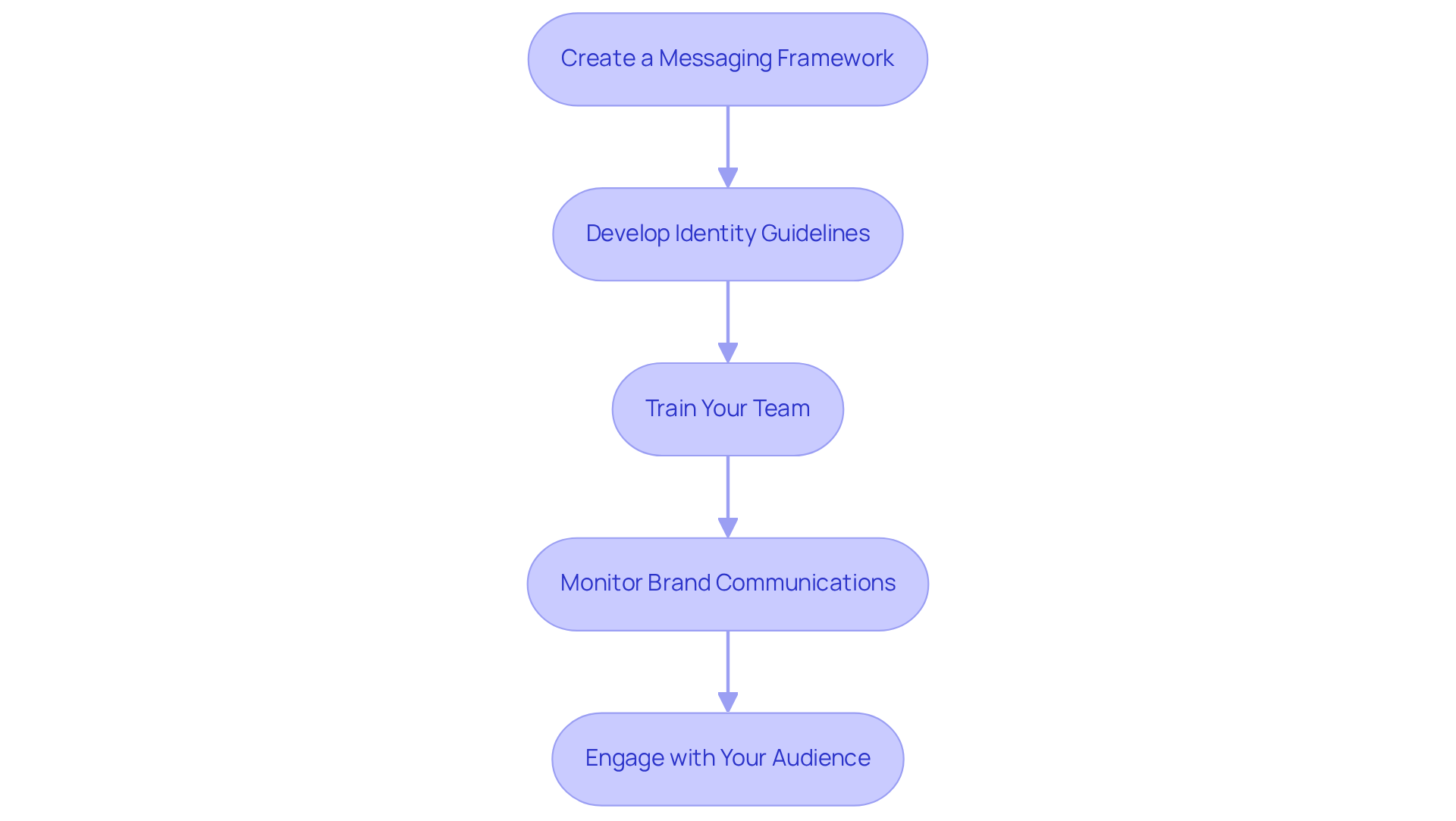
Conclusion
Building a successful company brand can often feel overwhelming, can't it? Many entrepreneurs grapple with the intricacies of establishing a brand that truly resonates with their audience. It’s not just about a logo or a catchy tagline; it’s about creating a meaningful connection with your consumers. This journey involves:
- Defining a clear brand identity
- Identifying your target audience
- Developing unique strategies that set you apart in a competitive marketplace
The reality is that without a strong brand, you may struggle to capture the attention of your audience. This can lead to frustration and uncertainty as you navigate the complexities of market expectations. However, there is hope. By aligning your brand values with consumer expectations and utilizing market research to understand their needs, you can craft a unique selling proposition that differentiates your brand in a crowded field.
Moreover, creating a cohesive visual identity and messaging framework is essential. This ensures that your brand communicates effectively across all platforms, fostering trust and loyalty among your customers. Remember, you are not alone in this journey. Many founders have faced similar challenges and have found success by embracing these strategies and adapting to the ever-evolving market landscape.
Ultimately, the path to brand building is about more than visibility; it’s about cultivating a brand that reflects your mission and values. By nurturing these connections and continuously evolving, you pave the way for long-term success and growth. So, take heart and know that with dedication and the right approach, you can build a brand that truly resonates with your audience.
Frequently Asked Questions
What are core values and why are they important for a brand?
Core values are the fundamental beliefs that drive a business. They should genuinely reflect what the company stands for and guide decision-making processes. In 2025, aligning these values with those of consumers is crucial, as 68% of adults prefer companies that share their personal values.
How can a mission statement enhance a brand's identity?
A mission statement encapsulates an organization's purpose and clearly communicates its goals and how it intends to serve customers. It helps foster emotional connections that build customer loyalty, and RNO1 emphasizes creating meaningful connections through design-driven solutions.
What is meant by a brand's identity personality?
A brand's identity personality refers to the traits that characterize its identity, such as being friendly, professional, or innovative. Consistently conveying this personality across all communications enhances product recognition, making it 3.5 times more noticeable to consumers.
What elements are included in a brand's visual identity?
A brand's visual identity includes a logo, color palette, and typography that visually represent the company. These elements should be distinctive and easily identifiable, as a signature color can enhance recognition by up to 80%, and 75% of individuals identify a company primarily by its logo.
Why is it important to document identity guidelines?
Documenting identity guidelines compiles all branding elements into a comprehensive reference that maintains consistency in branding efforts. With 15% of companies lacking such guidelines, having a clear framework is essential for effective identity management.
What is the significance of conducting market research?
Market research helps startup founders understand potential customers through surveys, interviews, and focus groups. It provides valuable data about demographics and needs, with 85% of market researchers using online surveys, highlighting their effectiveness in data collection.
How do buyer personas contribute to branding?
Buyer personas are detailed profiles of ideal customers that include their goals, challenges, and purchasing behaviors. Tailoring marketing approaches to these personas can lead to a 30% increase in engagement, making them essential for effective marketing strategies.
Why is competitor analysis important for startups?
Analyzing competitors helps identify their target audiences and marketing strategies, revealing market gaps and opportunities for differentiation. Understanding the competitive landscape is crucial to avoid common pitfalls, as 42% of startup failures stem from a lack of market need.
How can analytics tools enhance understanding of the target audience?
Utilizing analytics tools like Google Analytics and social media insights allows businesses to understand user behavior and preferences better. In 2024, 61% of survey responses were submitted via mobile devices, emphasizing the need for mobile optimization in analytics.
What role does testing and iteration play in understanding the target audience?
Testing and iteration involve continuously modifying approaches based on user feedback through methods like A/B testing. Startups that adapt their strategies based on insights often see improved conversion rates, with targeted emails generating significantly higher engagement than non-targeted ones.




